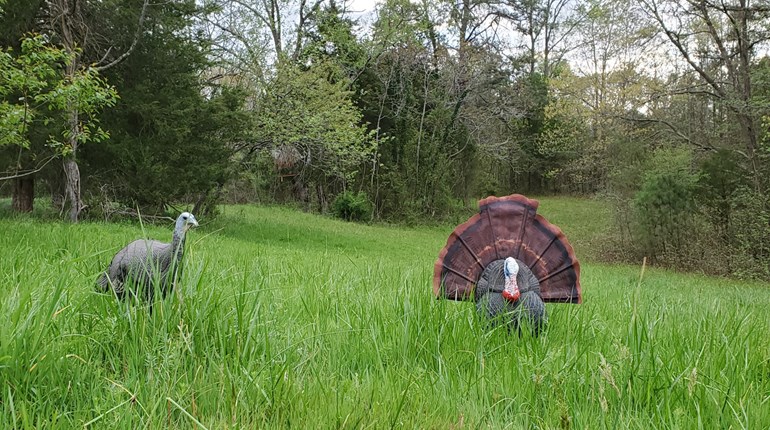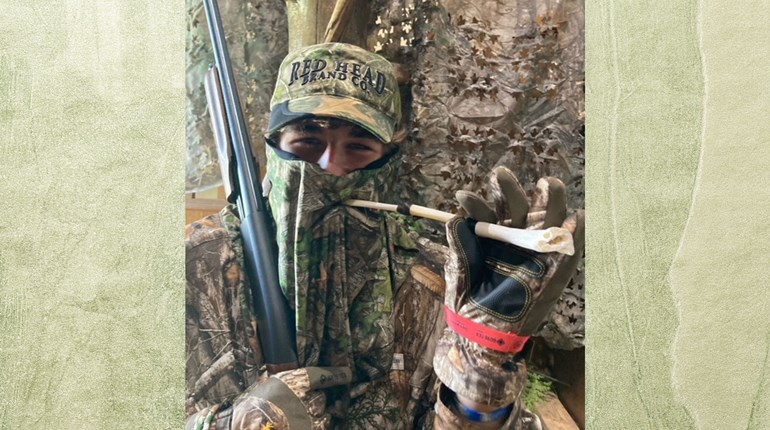
Quiet toms represent a particularly frustrating problem for spring turkey hunters. You know birds are there—you’ve seen their sign, spotted them at a distance, or perhaps heard them actually gobble once or twice. But then suddenly: nothing. The elation you felt on hearing that first gobble disappears as the woods grow ominously quiet, replaced with an eerie, almost palpable silence.
Working vocal birds is the essence of spring turkey hunting at its finest. But sometimes gobblers just don’t follow the script.
Such quiet toms can be killed. But like many challenges in turkey hunting, there is rarely one easy, clear solution. Rather, it pays to keep a variety of tactics in your bag of tricks and try one or the other depending on the specific situation you face. Before considering strategy, though, let’s take a quick look at why turkeys sometimes won’t gobble.
One factor may be bad weather. If it’s sleeting, snowing or raining hard, it’s fairly obvious why toms aren’t talking. Bitter cold and extreme heat can also slow gobbling activity.
Hens may be roosting nearby. If the ladies are close by, a gobbler has little reason to sound off.
Finally, heavy hunting pressure may have subdued his urge to call as a survival move.
Here are ten possible solutions to the quiet tom challenge:
1. Pattern the birds. Hunt them much like you would a deer. This takes time and lots of listening, watching, and searching for sign to determine what routes a gobbler usually takes. Look for watering holes and feed areas such as oak flats and clover or wheat fields. Search for tracks, leaves pulled back where birds have scratched for food, dusting areas, and strutting zones. These are often found at small openings in forests, field edges, logging roads, or benches and saddles in mountains. Look for thin lines where a gobbler’s primary feathers dragged the ground as he strutted. The idea is to predict the turkey’s movement patterns, then get on that route and wait. You can call lightly with soft clucks and just a couple of quiet yelps, or simply wait. Don’t expect to hear the gobbler sounding off as he marches in. We’re talking “quiet toms” here. These birds will slip in like a wisp of fog. Be keenly alert. Watch intently without moving. I’ve waited several hours before a tom slinked in silently using this approach.
2. Try locator calls. Some hunters hoot occasionally at dawn with an owl call, others never use them at all. But a variety of different locator calls can be valuable for “startling” or “shocking” a gobble out of quiet toms. Once you know where the bird is, based on that one give-away gobble, then you can move in close and use your best calling efforts to lure him in. Alternately, you can judge by your knowledge of the terrain where the bird is likely to head, then move to that area and wait for him it. I’ve had good luck with pileated woodpecker, crow, hawk, predator, “shock” and coyote calls. Blow them loud and hard, especially from mid-morning on.
3. Try cutting. Most hunters yelp, some cluck and a few purr. But the best turkey hunters I’ve accompanied over the years use a fourth call quite often. It’s not just good for quiet toms, but that is one time when it shines. The call is the cutt—sharp, loud, strident yelps in quick succession. A good mouth caller can make excellent cutts on a diaphragm. Even a novice, with a bit of practice, can make great cutts on a box. Hammer the paddle against the box with sharp, short strokes in quick succession. The aim is to sound like an excited or scolding hen—loud and forceful. You may just get one pinpointing gobble. Other times the bird will be so excited he’ll come running. But at least the cutt will get him talking.
4. Try different or multiple calls. Sometimes something different is all it takes to stir toms out of their silence. If you mainly use a mouth call, try a box, slate, aluminum, or push-pin call. Even more effective sometimes is using several calls at once. A tom might be willing to ignore one lone yelping bird. But if he hears what he thinks are two birds or a small flock of hens yelping, clucking and carrying on, it may prove more than he can resist. He might sneak in silently to check out the commotion. Or he might just gobble back and at least give away his location.
5. Go soft and quiet. While using two or three calls at once can sometimes goad a gobbler out of his silence, the opposite approach can also be effective. Try low-volume, soft calling. Walk 50 or 75 yards, and then call quietly like birds might do if they were spooked from heavy hunting pressure. A quiet tom might not gobble back at you, but simply give his presence away with a coarse yelp or just by clucking. Continue working him with soft calls and you can often lure in such birds with a scaled-back, low-key approach.
6. Mimic other turkey sounds besides calls. If birds are quiet from hard hunting pressure, forget calling or call just one time. Then cup your hand and pull back leaves sharply to simulate a hen scratching for food. Also try flapping a turkey wing carried in your vest to imitate a hen stretching her wings.
7. Use a gobble. Gobbling is a last resort call I turn to if I’m on private land and know no other hunters are in the area. It can sometimes draw a response from toms when nothing else works.
8. Try kee-kee runs. Another call good for prodding untalkative birds is the kee-kee run, used by lost young turkeys wanting to regain contact with their group. It’s normally thought of as a fall call, but it will often draw answers from gobblers in spring, too.
9. Roost him. If you can hear a tom’s flapping wings as he flies up to roost or get him to gobble one last time with a hen or owl call, your chances for taking a quiet tom improve dramatically. Get in tight to the bird the next morning well before first light and set up 50-75 yards away. Give him just one or two clucks or maybe a few soft tree yelps. Then remain silent. Show him you’re the same type of non-talkative bird he is. Often the tom won’t utter a sound but will drop down in range or make a few steps your way after he leaves the roost. That’s all it takes. This worked for me recently on a 20-pound shut-mouthed gobbler in West Virginia.
10. Approach from a different direction. All too often toms are quiet because they somehow sense that a hunter has moved into the area. They may not spook and fly off, but they’ll remain silent. Try taking a longer, more circuitous route than most hunters do, or you normally would, so you come in from a new direction.

































